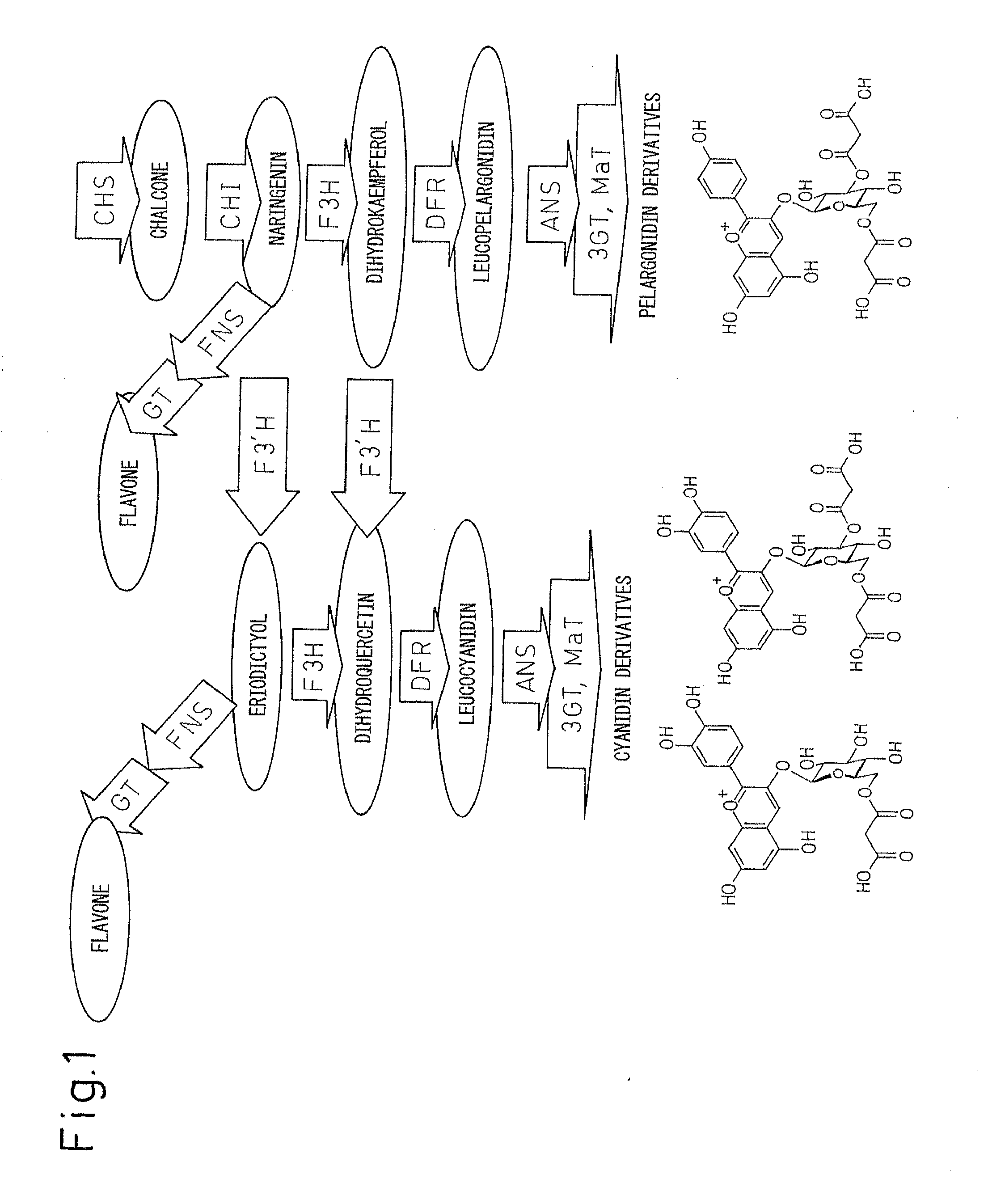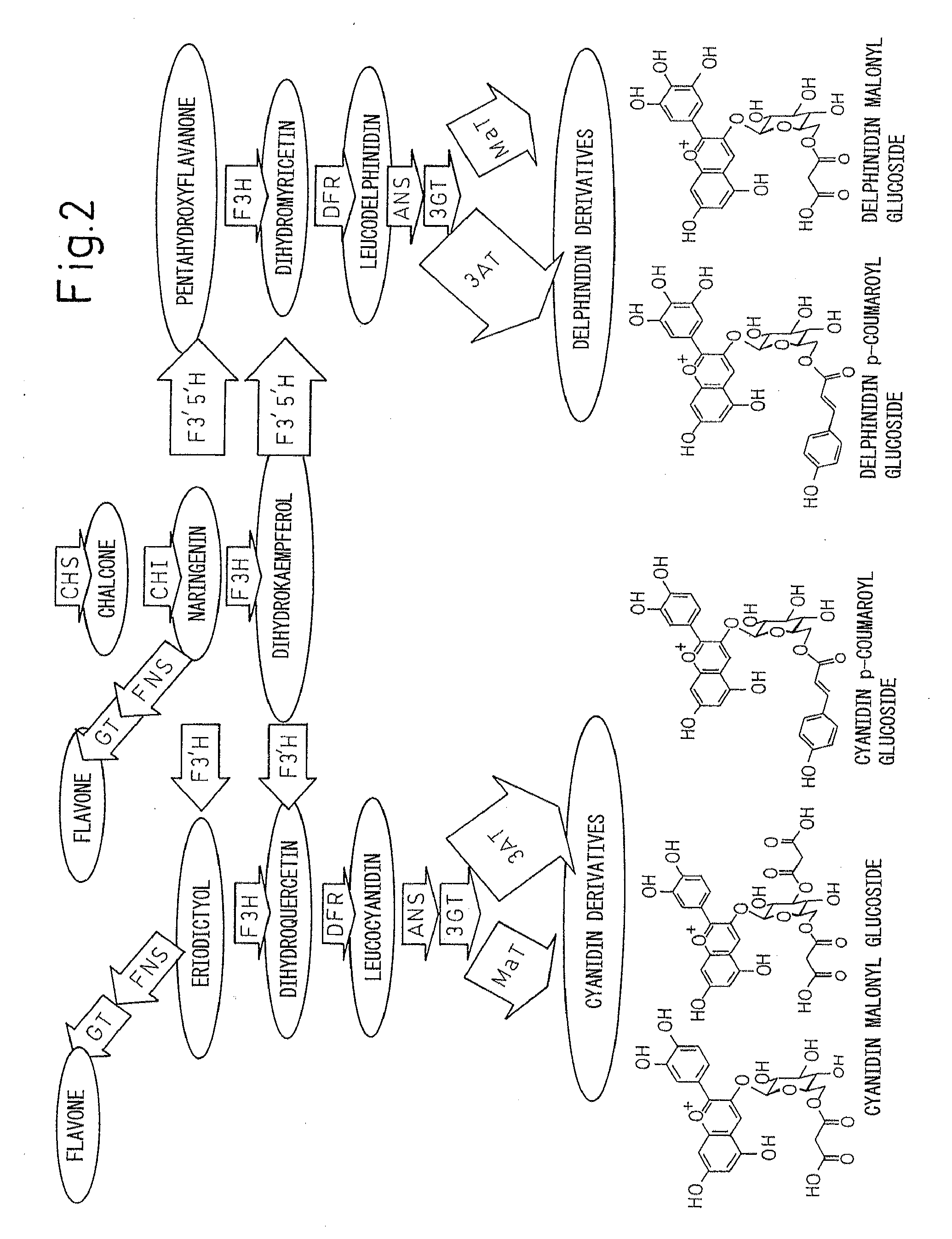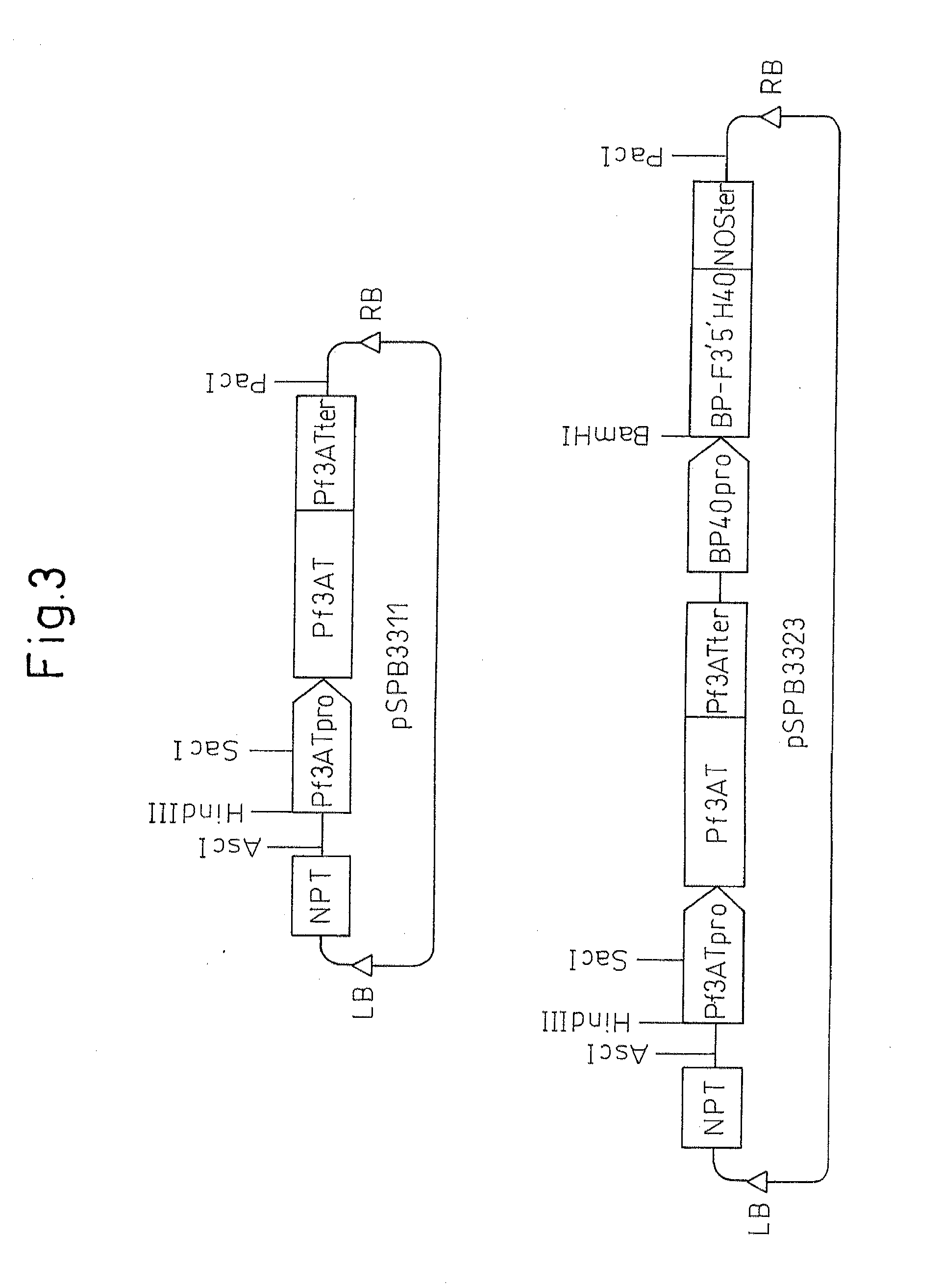Method for producing chrysanthemum plant having petals containing modified anthocyanin
a technology of anthocyanin and chrysanthemum, which is applied in the directions of enzymology, organic chemistry, transferases, etc., can solve the problems of difficult to predict the function of such promoters, and the lack of species capable of producing flowers of all colors
- Summary
- Abstract
- Description
- Claims
- Application Information
AI Technical Summary
Benefits of technology
Problems solved by technology
Method used
Image
Examples
example 1
Cloning of Perilla Anthocyanin 3-Acyl Transferase Chromosomal Gene
[0095]There are known to be red varieties of perilla in which anthocyanins accumulate in the leaves and green varieties in which they do not. Chromosomal DNA from the leaves of the former was prepared using a reported method (see Plant Mol. Diol., December 1997, 35(6), 915-927). This chromosomal DNA was partially decomposed with Sau3AI (Toyobo), and a fraction containing a 10 kb to 15 kb DNA fragment was recovered using a sucrose density gradient method. This fragment was then inserted into the BamHI site of EMBL3 (Promega), a type of lambda phage vector, using a known method to prepare a chromosomal DNA library. The resulting library was screened using pSAT208 (see Plant Cell Physiol., April 2000, 41(4), 495-502), which is cDNA of anthocyanin 3-acyl transferase derived from perilla, as a probe. Screening of the library was in accordance with a previously reported method (see Plant Cell Physiol., July 1996, 37(5), 711...
example 2
Nucleotide Sequence Determination of Perilla Anthocyanin 3-Acyltransferase Chromosomal Gene
[0096]10 μg of the DNA obtained above were digested with XbaI and isolated with 0.7% agarose gel followed by blotting onto Hybond-N (Amersham). When this film was hybridized in the same manner as previously described, a roughly 6.8 kb DNA fragment was found to hybridize with the probe. After digesting 20 μg of the same DNA with XbaI and isolating with 0.7% agarose gel, a roughly 6.8 kb DNA fragment was purified using GeneClean (Funakoshi) and coupled with pBluescript SKII-digested with XbaI. The resulting plasmid was designated pSPB513. The DNA sequence derived from perilla contained in this plasmid was determined by primer walking. The nucleotide sequence thereof is shown in SEQ ID NO. 4. This sequence is a region that demonstrates high homology with anthocyanin 3-acyl transferase cDNA in the form of pSAT208, the amino acid sequence (SEQ ID NO. 6) of protein encoded by this region was observe...
example 3
Amplification of Transcriptional Regulatory Region of Perilla Anthocyanin 3-Acyl Transferase Gene
[0097]PCR (holding for 1 minute at 95° C. followed by 25 cycles of a reaction consisting of 1 minute at 52° C., 2 minutes at 72° C. and 1 minute at 95° C.) was carried out using 1 ng of pSPB513 as template and two types of primers (5′-AAGCTTAACTATTATGATCCCACAGAG-3′ (SEQ ID NO. 7, underline indicates HindIII recognition sequence) and 5′-GGATCCGGCGGTGTTGAACGTAGC-3′ (SEQ ID NO. 8, underline indicates BamHI recognition sequence)). The amplified roughly 1.1 kb DNA fragment was digested with HindIII and BamHI.
[0098]The plasmid pSPB567 described in Patent Document 4 (in which pansy-derived flavonoid 3′,5′-hydroxylase gene is coupled to the 3′-side of cauliflower mosaic 35S promoter to which has been added EI2 enhancer, and in which a nopaline synthase terminator is further coupled to the 3′-side thereof) was digested with PacI, and a DNA fragment containing pansy-derived F3′5′H gene was cloned ...
PUM
| Property | Measurement | Unit |
|---|---|---|
| Fraction | aaaaa | aaaaa |
Abstract
Description
Claims
Application Information
 Login to View More
Login to View More - R&D
- Intellectual Property
- Life Sciences
- Materials
- Tech Scout
- Unparalleled Data Quality
- Higher Quality Content
- 60% Fewer Hallucinations
Browse by: Latest US Patents, China's latest patents, Technical Efficacy Thesaurus, Application Domain, Technology Topic, Popular Technical Reports.
© 2025 PatSnap. All rights reserved.Legal|Privacy policy|Modern Slavery Act Transparency Statement|Sitemap|About US| Contact US: help@patsnap.com



